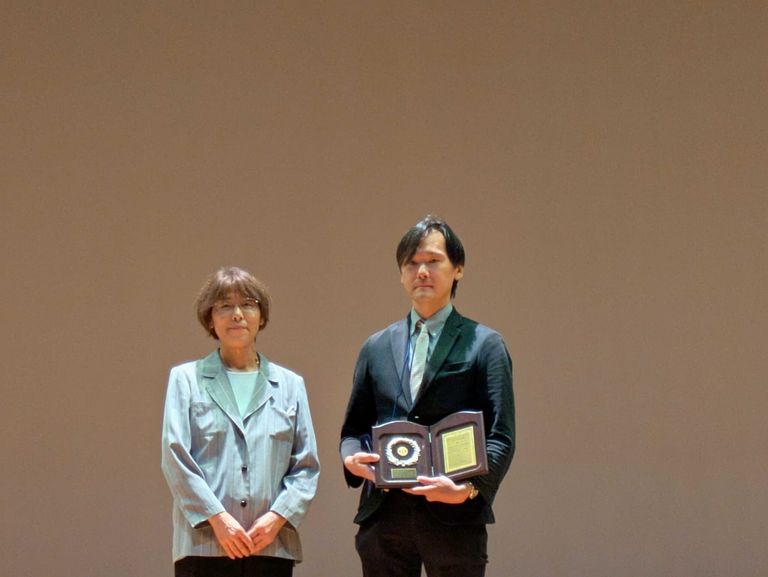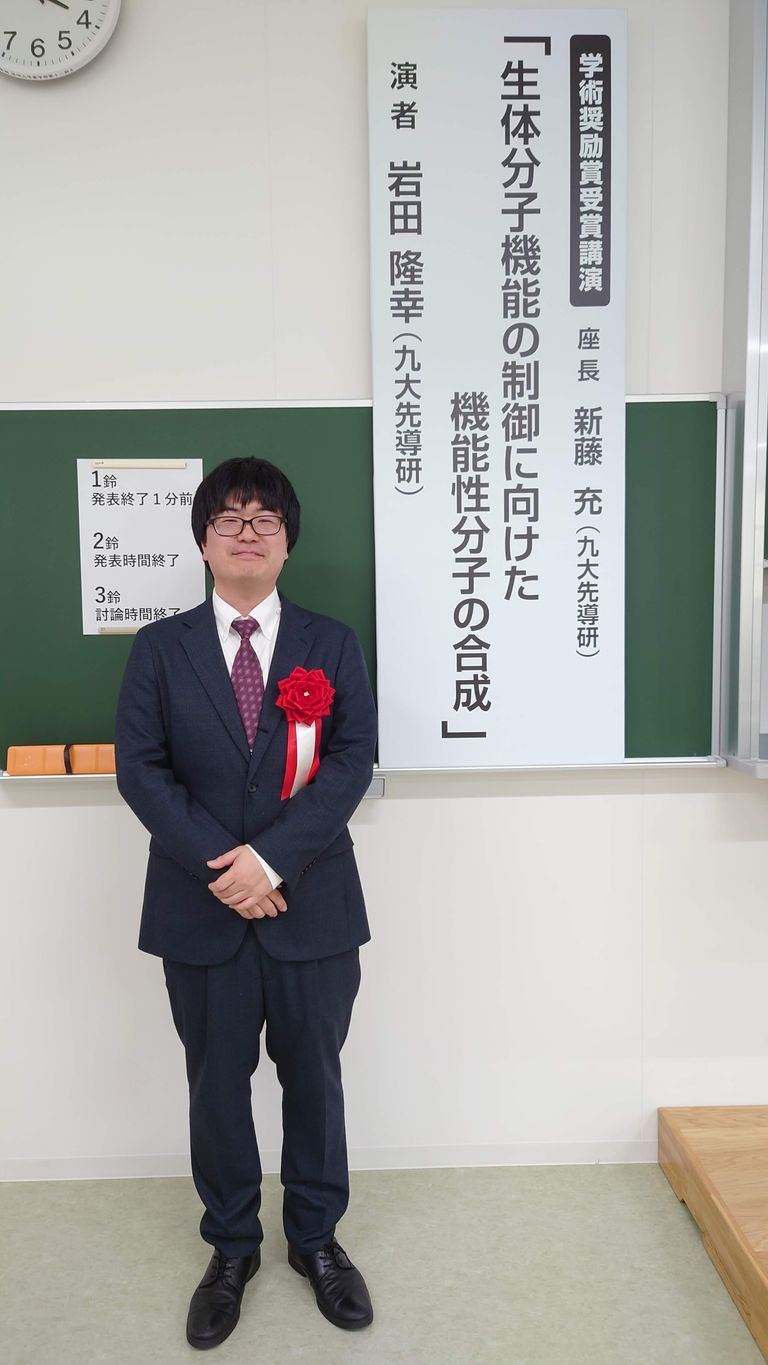
Professor Fukuhara Receives the 39th Photochemistry Association Award
Sep 8, 2025
Award

Professor Emeritus Masaharu Tsuji Receives the 3rd JEMEA Academic Achievement Award
Sep 2, 2025
Award

Discovery of Reduction Reactions of Organic Molecules Proceeding Under Pressure - Providing New Design Guidelines for Pressure-Responsive Material Development
Aug 18, 2025
Press Release

World's First ATP Prodrug Shows New Potential for Healthspan Extension - Proposing Bioenergetic Molecular Therapy to Improve Energy Metabolism Imbalance Through Mitochondrial Activation
Jun 27, 2025
Press Release

New Therapeutic Approach for Deep Organ Cancer - Realizing Photodynamic Cancer Treatment with Wirelessly Driven Organic EL (OLED)
May 2, 2025
Press Release

Developed an AI-Based System to Automate Understanding of Chemical Reactions - Facilitating Elucidation of Reaction Mechanisms Through Deep Learning
Mar 14, 2025
Press Release
Professor Katsuhiko Tomooka Receives the 2024 SSCJ Award
Dec 17, 2024
Award

Assistant Professor Takayuki Iwata Receives The Pharmaceutical Society of Japan Kyushu-Yamaguchi Branch Encouragement Award
Dec 11, 2024
Award

A New Neurovascular Stent Developed on Intermediate Water Research from Laboratory of Soft Material Chemistry
Dec 4, 2024
Press Release

Assistant Professor Yuya Kawasaki Receives 2024 Organic Synthetic Chemistry Association Kyushu-Yamaguchi Branch Encouragement Award
Nov 25, 2024
Award

Successfully Prevented Catalyst Poisoning and Improved Robustness of Artificial Olfactory Sensors Using Weak Van der Waals Forces Between Hydrophobic Molecular Scaffolds and Hydrophilic Solid Surfaces
Nov 1, 2024
Press Release

Professor Kazunari Yoshizawa Receives the CSJ Awards 2023
Aug 2, 2024
Award
